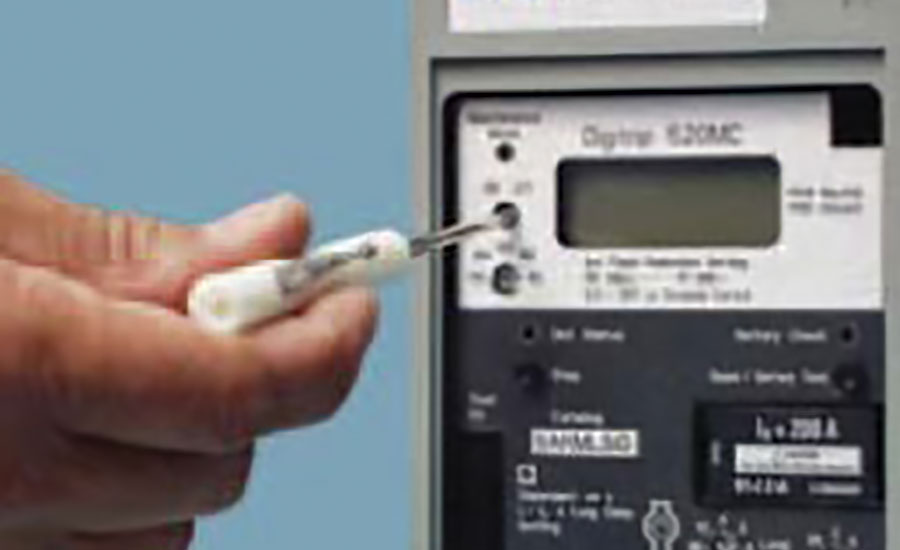The NFPA 70E Standard “Electrical Safety in the Workplace” recognizes that the quicker a circuit breaker operates (instantaneous trip preferred) the less incident energy (arc flash) an individual maybe exposed who is working on electrical equipment and an arc flash incident occurs.
Circuit breakers that operate instantaneously may reduce their incident energy levels from 40 calories/cm2 (Arc Flash PPE Category 4) or greater to levels that in many cases are 8 calories/cm2 (Arc Flash PPE Category 2) or less. In many cases, depending on available fault current and working distance to exposed energized equipment, the incident energy levels will be less than 1.2 calories or no worse than a second-degree burn. Therefore, we like high speed (or instantaneous) tripping.
The National Electrical Code (NEC) recognized the advantages of instantaneous operation of circuit breakers from an arc flash standpoint and accepted a proposal for the 2011 NEC code requiring circuit breakers without an instantaneous trip function to require one of the following methods to reduce the incident energy levels:
- Zone Selective Interlocking (ZSI)
- Differential relaying
- Energy reducing maintenance switching with a local status indicator
- Or an approved equivalent means.
This new section is entitled 240.87 Non-instantaneous Trip for the 2011 NEC.
This section of the NEC has been updated in 2014 and clarified to indicate we’re only talking circuit breakers that are rated 1200 amp breakers and above. This section was updated again in 2017.
Trying to isolate faults
It’s quite common for engineers, who perform selective coordination, to specify circuit breakers without the instantaneous trip function or intentionally turn the instantaneous trip setting to off; the main circuit breaker in a facility typically does not have instantaneous settings. If it did, there may be a race between the main breaker and a feeder breaker for a downstream fault. The goal with selective coordination is to isolate a fault by its closest upstream device without any further upstream devices operating.
2014 revision
The 2014 edition of the NEC made significant changes to this new section starting with a new title: “Arc Energy Reduction.” Now the intent of the requirement has been made clear: “Reduce the arc flash energy level.” Circuit breakers without instantaneous trip function must have one of the methods listed earlier for the intent of reducing the incident energy level.
The section also clarified that it was only for 1200 amp breakers and above, It also clarified that it applies to an adjustable breaker that has a setting of 1200 amps or higher, even if it is set lower e.g. 0.9 x 1200 amps = 1080 amp pickup. Where the highest continuous current trip setting for which the actual overcurrent device installed in a circuit breaker is rated or can be adjusted is 1200 amps or higher,240.87(A) and (B) shall apply.
2017 revision
The 2017 edition of the NEC has made additional changes to the Arc Energy Reduction section. The section reads as follows. Additional methods to reduce clearing time:
- Zone Select Interlocking
- Differential relaying
- Energy reducing maintenance switching with local status indicator
- Energy reducing active arc flash mitigation system
- An instantaneous trip setting that is less than the available arcing current
- An instantaneous override that is less than the available arcing current
- An approved equivalent means
My personal preference is the energy reducing maintenance switch which allows a worker to set a circuit breaker trip unit to “no intentional delay” to reduce clearing time while the worker is working within the arc flash boundary and then to set to trip unit back to a normal time delay setting after the energized work has been completed. The energy reducing maintenance switch is a means by which an intentional time delay in the opening of the circuit breaker can be overridden while maintenance, service or diagnostic tasks are being performed.
An energy reducing active arc flash mitigation system helps in reducing arcing duration in the electrical distribution system. No change in the circuit breaker settings is required during maintenance. Typically a fiber optic sensor triggered by the arcing fault is used.
An instantaneous trip is a function that causes a circuit breaker to trip with no intentional time delay. If arcing currents are above the instantaneous trip setting, the circuit breaker will trip in the minimum possible time.
Each of the various options has advantanges and disadvantages in both cost and space requirements. Investigate each option to determine what’s best for your facility and ways to reduce the arc fault energy.



